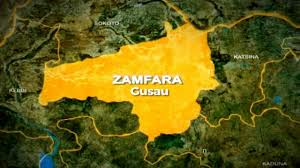A 6.1-magnitude earthquake rocked the central Philippines early Thursday, the US Geological Survey said, with the local seismological agency warning of aftershocks and possible damage.
The strong and shallow quake struck off Masbate province in the centre of the archipelago nation shortly after 2:00 a.m. local time (1800GMT), jolting people awake.
The epicentre was 11 kilometres (seven miles) from the nearest village of Miaga, in Uson municipality, on the province’s main island of Masbate, USGS said.
Shallow earthquakes tend to cause more damage than deeper ones, but there were no immediate reports of damage or casualties.
No tsunami warning was issued.
“It was a bit strong,” Masbate provincial police chief Rolly Albana told AFP.
“I was sleeping when we were shaken and woken up.”
Albana said police had not reported any effects of the quake.
Uson police chief Captain Reden Tolledo said some residents fled their homes.
“Even I went outside because of possible aftershocks,” Tolledo said.
Gregorio Adigue, a disaster officer in the Dimasalang municipality, said he felt a strong aftershock nearly an hour after the quake.
But buildings and other structures in the area did not appear to be damaged, he said.
“Later we will go around schools in each village to inspect their buildings,” Adigue said.
The Masbate education department reportedly suspended classes for Thursday due to “continuous aftershocks being felt” in the province.
Quakes are a daily occurrence in the Philippines, which sits along the Pacific “Ring of Fire”, an arc of intense seismic as well as volcanic activity that stretches from Japan through Southeast Asia and across the Pacific basin.
Most are too weak to be felt by humans, but strong and destructive ones come at random with no technology available to predict when and where they will happen.
The nation’s civil defence office regularly holds drills simulating earthquake scenarios along active fault lines.
AFP











